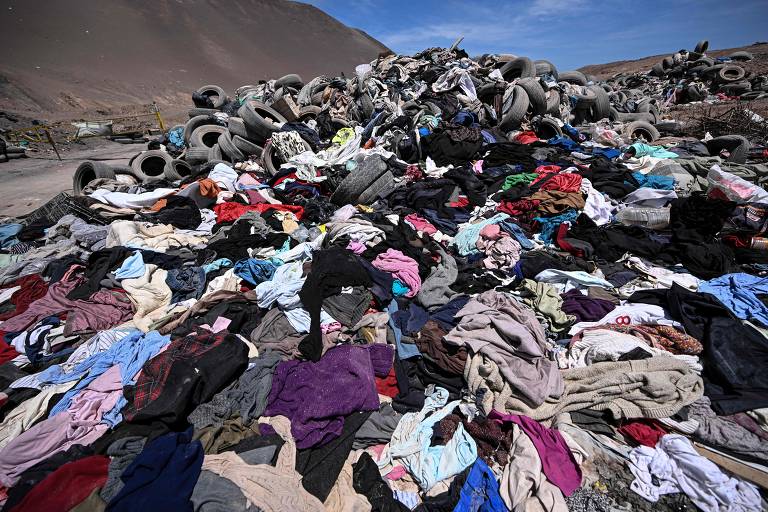The Impact of the Textile Industry on Health and the Environment

Discover the impact of the textile industry on health and the environment and how conscious fashion can transform the future of sustainability.
The Need for Conscious Fashion
Fashion has always been a reflection of society, but its environmental and health impact has become increasingly alarming. The textile industry consumes vast amounts of natural resources, generates pollution, and exposes workers and consumers to toxic substances.
Given this scenario, the need for conscious fashion is growing, offering sustainable alternatives to minimize harm to both the environment and human health.
In this article, we’ll explore the impact of the textile industry and how we can adopt more responsible consumption habits.
The Impact of the Textile Industry on Health and the Environment
The fashion industry is one of the most polluting in the world, affecting both the environment and the health of those involved in its production and consumption.
The High Consumption of Natural Resources
Textile production requires massive amounts of natural resources, such as:
- Water – The textile industry consumes around 93 billion cubic meters of water per year.
- Cotton – Cotton farming requires pesticides and large land areas.
- Fossil Fuels – Used in the production of synthetic fabrics like polyester and nylon.
Alternatives to Reduce Resource Consumption
- Support brands that use recycled fabrics.
- Choose clothing made from organic cotton and biodegradable materials.

Chemical Pollution and Textile Waste
The manufacturing of clothing involves chemical processes that pollute rivers and soil:
- Synthetic dyes contain heavy metals and toxic substances.
- Microplastics from synthetic fabrics contaminate oceans.
- Improper disposal of clothing generates tons of textile waste.
How to Reduce Pollution in Fashion
- Choose garments with eco-friendly certifications.
- Avoid clothes made from synthetic fibers that release microplastics.
- Participate in recycling and reuse programs.
The Impact on Human Health
Exposure to chemicals in the fashion industry affects both workers and consumers.
Health Problems Related to Fast Fashion
Allergies and skin irritations – Chemicals in fabrics can cause skin reactions.
Respiratory diseases – Textile workers are exposed to dust and toxic fumes.
Carcinogenic substances – Some clothes contain harmful chemical residues.
Conscious Fashion – How to Make More Sustainable Choices
Conscious fashion offers alternatives to reduce the environmental and social impact of the textile industry.
1. Choosing Sustainable Materials
When buying clothes, opt for fabrics that have a lower environmental impact:
Organic cotton – Grown without pesticides.
Linen and hemp – Natural fibers with a low environmental footprint.
Recycled fabrics – Made from PET bottles or old clothes.
2. Supporting Sustainable Brands
Many companies are investing in sustainable practices, such as:
- Ethical and fair production for workers.
- Use of eco-friendly and biodegradable materials.
- Commitment to a circular economy, reducing waste.
How to Identify Sustainable Brands
Look for certifications like GOTS (Global Organic Textile Standard) and Fair Trade.
Research the brand’s transparency regarding its environmental impact.

3. Buying Less and Buying Better
Excessive consumption driven by fast fashion leads to waste and environmental degradation.
Tips for a Sustainable Wardrobe
Adopt minimalism – Invest in versatile, high-quality pieces.
Reuse and repair – Give a second life to old clothes.
Avoid impulse purchases – Ask yourself if you really need that item.
4. Opting for Second-Hand Clothing and Thrift Stores
Buying second-hand clothes reduces demand for new products and extends the lifespan of garments.
Benefits of Circular Fashion
Less waste – Reduces the disposal of clothing in landfills.
More savings – High-quality pieces at affordable prices.
Lower environmental impact – Decreases the extraction of natural resources.
5. Washing Clothes Consciously
How we care for our clothes impacts their durability and the environment.
Sustainable Laundry Practices
Use less detergent and avoid chemical softeners.
Wash with cold water to save energy.
Air dry instead of using a dryer.
The Future of Conscious Fashion
Conscious fashion is not just a passing trend but a necessity for the planet’s future.
Innovative Technologies in Sustainable Fashion
Biodegradable fabrics – Materials that decompose without polluting.
Digital fashion and 3D printing – Reduce waste in production.
Upcycling – Transforming waste into valuable new pieces.
How Society Can Help Drive Change
- Demand more transparency and sustainability from brands.
- Choose products with a lower environmental impact.
- Educate yourself on the impacts of the fashion industry.
Conclusion: Conscious Fashion for a Sustainable Future
Conscious fashion is a powerful way to reduce environmental impact and protect human health. Small choices in daily life—such as supporting sustainable brands, reusing clothes, and avoiding synthetic fabrics—can make a huge difference.
The future of fashion is in our hands. Why not start making more sustainable choices today?
Conscious Fashion – https://elle.com.br/moda/do-lixo-ao-luxo-cuide-da-sua-roupa-cuide-do-planeta



